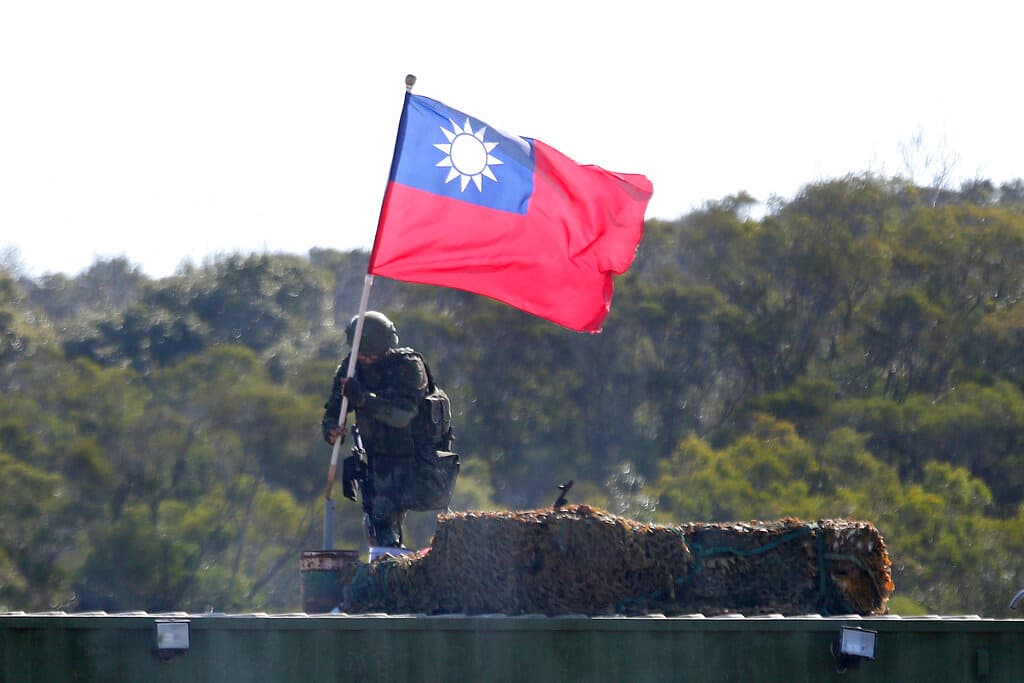The Chinese Civil War That Never Ended
Strategists in Beijing may one day look back on this period of history and wonder whether keeping Taiwan close created more problems than it solved.

Americans were captivated by unconfirmed reports circulating online in late September that Xi Jinping had been deposed in a coup d’état. While Beijing may not have just undergone a coup, China is still in a civil war of another kind.
Thanks in part to the One-China Policy, the civil war between Chinese Communists and Nationalists from the 1940s has been frozen in time.
The 1972 Shanghai Communiqué, jointly issued by the United States and the PRC, states: “The United States acknowledges that all Chinese on either side of the Taiwan Strait maintain there is but one China and that Taiwan is a part of China.”
While the United States stated in 1979 that it recognized the PRC as “the sole legal Government of China,” it neither recognizes PRC sovereignty over Taiwan nor the island as an independent country.
Taiwan is an unresolved remnant of the Chinese civil war that raged more than 70 years ago. Either surrendering to the PRC or becoming formally independent would have effectively ended the conflict, but Taiwan has done neither. Instead, Taiwan’s position means that the civil war remains contested.
This civil war, despite being mostly dormant for the past 70 years or so, has ramifications beyond the Taiwan Straits.
When internal conflict — a recurring theme in Chinese history — eventually reemerges, whichever region, province, or warlord breaks from Beijing will not be alone. They may choose to join with Taiwan.
While it is impossible to predict the contours of future internal conflict within China, and no China analyst will go on the record predicting such massive shifts occurring any time soon, potential scenarios abound.
For example, southeastern provinces such as Guangdong could seek to maintain their access to international trade by breaking away from a future PRC increasingly closed off to the outside world — and in such a scenario, could well join Taiwan.
A severe economic crisis in China could compel wealthier regions, such as the greater Shanghai area, to insulate themselves from the rest of the country.
Religious revival in Tibet or in Xinjiang also could lead to breakaway processes. In all these scenarios, joining Taiwan would likely be more attractive than pursuing independence.
The One-China Policy thus creates both opportunity and risk for the PRC. There is an opportunity for the PRC to gain Taiwan as a new province, but there is also a risk for the PRC — that Taipei will someday gain the support of additional provinces currently ruled by Beijing.
Given the PRC’s continued embrace of the One-China Policy, the potential reward outweighs any risk to Beijing in its assessment. Yet that calculus could one day change, especially in a post-Xi China that could see significant turmoil.
The One-China Policy would create the legitimacy for such a shift: After all, “there is but one China,” and provinces not ruled by Beijing are also part of China. In fact, the more provinces that join with Taiwan, the more legitimacy that entity would enjoy as a potential ruler of all China.
The experience of Taiwan may be tempting: It is wealthier than mainland China, and its population enjoys more freedom. Despite the ever-present threat of war with the PRC, Taiwan has remained in relative peace, and was unaffected by the horrors of the Great Leap Forward, the Cultural Revolution, and other events in PRC history.
Strategists in Beijing may one day look back on this period of history and wonder whether keeping Taiwan close created more problems than it solved.

